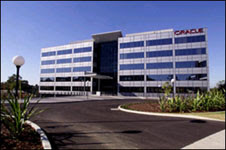Does this make sense? Why does Europe find SOA compelling while Asia takes a much more cautious stance? Do the reasons for not up-taking SOA (lack of skills and lack of business case) have any relationship to the financial crisis? Or do they have more to do with culture and phase of economic development?
It is interesting to me that Europe leads the way in SOA adoption. This trend is also evident in other areas such as enterprise modelling. I think it reflects the more structured European approach that appreciates coherent design and long term planning. This is in contrast to the more pragmatic shorter term focus of the US.
Many parts of Asia are in a rapid process of ramping up their IT infrastructure. As such they have a choice – do they go for a quick project win that gives maximum short term business return or do they invest in an architected approach that costs more now but less over the longer term? Many organisations are in the process now of regretting the first of these approaches. It would be a major mistake for organisations to sacrifice the long term effectiveness of their infrastructures for the sake of short term gain even though it may be understandable that they may think along these lines because
of the uncertain financial situation.
Below is a graph showing the long term cost of different approaches. Over the longer term SOA is so much cheaper. If organisations had embarked on proper architected approaches earlier they would now be reaping the benefits of lower long term cost and so would be at significant competitive advantage in these difficult economic times. This is because SOA is a very cost-effective way of developing new processes and composite applications without big spending on new off-she-shelf applications.
My question at the bottom of all this is simple – if you are not doing SOA what are you doing instead? Are you just building systems as you need, connecting them as you need? I have always felt that asking for a business case for SOA is meaningless. You don’t ask for a business case to use an architect or have an architecture when designing a building. You ask for a business case to build the building. But once you decide that the building is viable you don’t then have a business case for actually design it. It is assumed. Why is it that we treat IT in such a haphazard way?
--Saul Cunningham


2 comments:
Are there numbers to back up the graph?
The real engine to drive the next generation of web is integration capability & high speed database access in a cloud environment. This makes SOA, federated security, & massively parallel database access the key to drive innovation. The move into the cloud will necessitate better integration capability & likely drive SOA (of whatever people want to call it) adoption.
Post a Comment